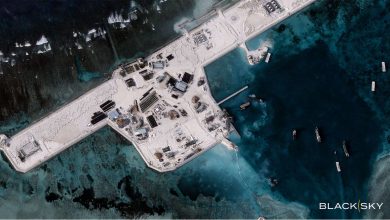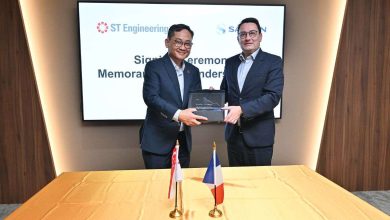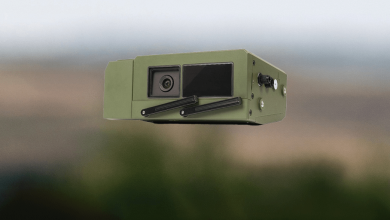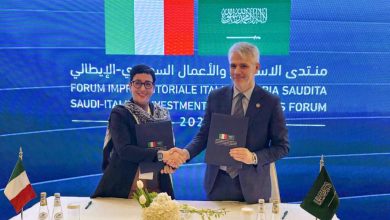
Raytheon: A Century of Innovation and Excellence
In 1922, on the unoccupied third floor of a structure in Cambridge, Massachusetts, the creators of what was fundamentally a technological startup utilized chalk and string to outline the dimensions of their inaugural laboratory.
Within those humble surroundings, the pioneers had sown the foundations of what would evolve into Raytheon Company, igniting a century-long narrative of excellence in technology, innovation, and perpetual renewal. This journey continues today through Raytheon Technologies, a firm whose collective legacy of groundbreaking innovations spans three centuries.
“At Raytheon Technologies, our founders were trailblazers in the truest sense, establishing an incredible legacy that has influenced air travel, global defense, and space exploration,” stated Raytheon Technologies Chairman and CEO Greg Hayes (photo).
“With over three centuries of joint history, we boast a rich legacy grounded in innovation and future-oriented vision,” he further mentioned.
The entities that constitute Raytheon Technologies share a remarkable history of innovation and transformation.
Raytheon Company, initially referred to as the American Appliance Company, was established on July 7, 1922, near the Massachusetts Institute of Technology, by Laurence Marshall, an engineer and entrepreneur; Dr. Vannevar Bush, who later became dean of MIT’s School of Engineering and scientific advisor to President Roosevelt during World War II; and Dr. Charles G. Smith, a distinguished scientist.
Their groundbreaking innovation was a tube that revolutionized radio technology, making it an accessible and affordable device for households. They named it Raytheon, a blend of Old French and Greek meaning “light from the gods,” and its success prompted them to rebrand the company after their flagship product.
Many initiatives start strong but quickly lose momentum. However, Raytheon Company built upon its initial success, weaving together those foundational elements into a brand identity that would adapt and expand significantly over the ensuing decades.
The inaugural Raytheon manufacturing facility was located in this building in Kendall Square in Cambridge, Massachusetts, depicted here in 1928.
The essence of the company is encapsulated in a 1930s photograph showing Marshall holding a telephone’s receiver. Beneath on a shelf rests a copy of “The Little Engine That Could” – a symbol of the can-do spirit that has driven the company throughout its existence.
There’s an intriguing tale from the early World War II period about how Raytheon’s ingenious chief engineer, Percy Spencer, discovered the technique for mass-producing magnetrons, crucial components for radar, which were urgently needed for the war effort. This breakthrough transformed a company known primarily for radio tubes into one synonymous with sophisticated radar and guidance systems. Another system, the shipboard SG radar, is credited with significantly contributing to victory at sea.
While defense work continued post-war – prominently with the guided Lark missiles that executed a historic interception of a drone target mid-flight – the postwar era initiated a phase of growth and diversification for Raytheon Company. Among the key innovations was another contribution from Spencer; one day he noticed that the candy bar in his pocket was melting when he approached a magnetron. The result was the world’s first microwave oven, branded as Radarange, marking Raytheon’s entry into the appliance market. This period also saw ventures into educational textbook publishing, petroleum exploration, industrial construction, and aviation.
Raytheon Company played a vital role in one of the 20th century’s defining technological achievements by supplying the computer that guided the Apollo 11 astronauts to the moon. Various segments of today’s Raytheon Technologies supported that mission as well, providing communication devices, fuel cells, environmental controls, and spacesuits.
As the Cold War concluded, Raytheon Company adapted its strategy once again, developing renowned defense, security, and aerospace systems, including the Patriot Air and Missile Defense System; early-warning phased array radars that have aided in maintaining peace; the Standard Missile-3, designed to intercept a malfunctioning satellite; and the Visible Infrared Imaging Radiometer Suite, producing the highest-resolution composite Earth images.
The company achieved ongoing innovation by attracting and retaining skilled talent, promoting diversity of thought and novel concepts, and acquiring businesses such as E-Systems, Texas Instruments Defense, and Hughes Defense. These and other like-minded tech organizations enriched their own legacy of innovation, from the utilization of the first network email and the “@” symbol in email addresses to world-class expertise in cybersecurity.
The device utilized by Ray Tomlinson, a principal engineer with Bolt, Beranek and Newman (later acquired by Raytheon Company), to transmit the inaugural network email in 1971.
In 2020, Raytheon Company rejuvenated itself once again, merging with the aerospace segments of United Technologies Corporation to create Raytheon Technologies – the largest aerospace firm globally. Raytheon Technologies now employs approximately 174,000 individuals, including 58,000 engineers, and its global footprint comprises 235 manufacturing, production, and overhaul facilities – a significant distance from that modest lab in Cambridge.
Thus, while technologies have advanced – currently concentrating on areas such as avionics, cybersecurity, directed energy, electric propulsion, hypersonics, and quantum physics – the company’s commitment to groundbreaking innovations remains unchanged.
Today, that commitment is evident in the endeavors of the researchers, engineers, and other innovators leveraging the company’s $7.2 billion investment in research and development and 52,000 patents to enhance air travel safety, sustainability, and connectivity; to create smarter defense systems; and to develop more agile and dynamic space technologies.
Recent illustrations include contactless airport check-in kiosks during the COVID-19 pandemic; the ship-based SM-3 Block IIA interceptor neutralizing a simulated ballistic missile; the Geared Turbofan engine – the most efficient single-aisle aircraft engine ever constructed – and NASA’s next-generation spacesuit.
Over the last century, the companies that now comprise Raytheon Technologies have broken barriers, surpassed expectations, and crafted an ambitious vision that has shaped commercial air travel, defense advancements, and space exploration.
“The merger of our two great companies into Raytheon Technologies combined the finest elements of commercial aerospace and defense technology,” said Hayes. “From this solid basis, we will persist in defining the future of aerospace and defense – propelled by technology, innovation, and collaboration – into the forthcoming century.”







